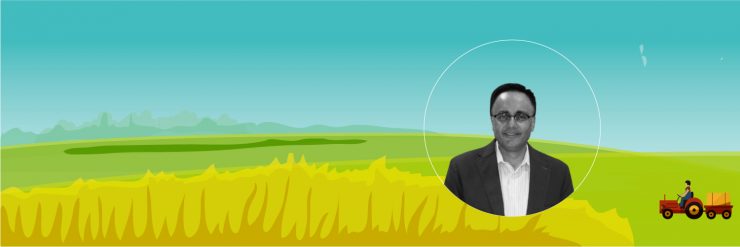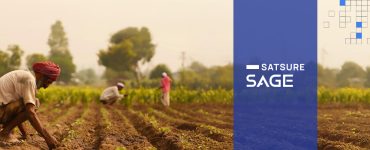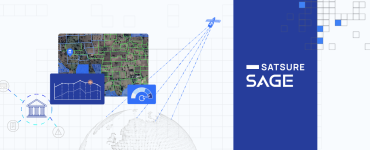Introduction:
Nipun Mehrotra is the Founder of “The Agri Collaboratory”, a Think-Tank promoting innovation at scale, an “Indian Agri Platform” and thematic execution to ensure by 2030 India is a global leader in Agri innovation and make Indian Agriculture world-class.
He is a transformational business leader with 35 years of diverse experience in Wipro and IBM India. He led strategic initiatives and large operational businesses across the IBM Asia Pacific Region for twelve years as the Chief Digital Officer. He led IBM’s thrust on digital platforms and innovation in several industry domains – including important societal areas like Agriculture, Health – with AI, Cloud, IoT, Blockchain, Remote Sensing data, etc.
His expertise lies in managing large complex businesses, balancing constant transformation with operational execution. At four distinct occasions across India and Asia, he helped reshape large multi-hundred-million-dollar businesses with thousands of employees, facing strong headwinds due to industry upheavals and aligning them to market growth.
Agriculture utilises around 50% of India’s workforce, 90% of freshwater and 46% of the land. Yet it barely generates 14% of GDP and 10% of exports. Most farms are small-sized, with half of them being rain-fed. The majority of farmers (~100 Million) lack low cost, institutional credit. All this, combined with rapid soil degradation and significant crop wastage (Rs 90,000 Crore), makes the path forward look arduous. However, the situation is not entirely bleak. Production has outpaced population growth for decades, catapulting India into one of the largest global producers of wheat, rice, sugarcane, cotton, milk, pulses, fruits, vegetables and more. But despite volumetric self-sufficiency, India struggles with 33% malnutrition – ironically amongst farmers themselves.
Keeping these gaps in mind, ‘The Agri Collaboratory’ was formed as a not-for-profit, specialised Food and Agriculture “Think and Do Tank”, working with a long-term mission to reposition India as a leading global agricultural Innovator by 2030. The guiding philosophy of ‘The Agri Collaboratory’ is to realise the national agricultural vision into reality is anchored in solving several intractable issues and transforming how we collaborate and collectively drive execution. We agreed that working on complex, national scale challenges requires taking the long view (15 – 30 years) with well-calibrated milestones. We focus on outcomes in four discrete yet interconnected areas, led by subsets of alliance members: [Economic – e.g., Credit access | Indian Agri Platform – e.g., decision making | Sustainability – e.g., Water usage | Skills – farmer to researcher.]
Among these subsets, the Indian Agricultural Platform (IAP) is catering to the need for an open, scalable, integrating platform that democratises access to Agri information, credit, insurance and markets; incubates innovative business models; and enables better decision making. The IAP shall be created by the ecosystem, regulated by the Government, and is envisioned as an “enabling framework of Data and Services (applications) around a data exchange”.
Use Case 1: Agri Fintech (Farm Credit)
Consider this scenario, leveraging the IAP for a credit use-case in the year 2024:Selvam, a rice farmer with a two-acre farm near Madurai, logs into the IAP using retina scan, fills in a loan request in Tamil, attaches photos of himself and the farm. He accords consent for his data to be accessed from different entities (Govt, Start-ups, FPOs etc.): Aadhaar, geolocation, three-year crop type, yield and earnings. This data flows in, completing Selvam’s application and providing visibility of his farming history to all potential lenders. To evaluate credit risk, they use the combination of geolocation along with Aadhar to extract Selvam’s farm credit history and details of all existing and completed loans. The automated process allows a majority of the lenders to approve/reject the loan online within minutes. Artificial Intelligence flags issues needing a clarifying phone call. Selvam chooses a financial institution that pays the seed supplier directly, crediting the balance loan into Selvam’s regular bank and creating an auto-debit for the month after harvest. The entire process is digital, with no paperwork. The bank also remits a small fee to the Startup for providing Selvam’s cropping history. Back in 2020, Selvam recalls filling several loan applications individually, spending money travelling to Madurai and loan sanctions took an average of two months. The IAP has reversed and democratised the process, giving him the power while lenders now bid for Selvam’s loan. Transparent comparison of different offers allows Selvam to choose wisely.
Half our farmers cannot get credit easily because of incorrect or lack of land records, and financiers have limited credit-risk assessment information. As in Selvam’s example, the IAP can facilitate this by triangulating data real-time from several entities. These are a farm management startup revealing cropping history, satellite data for estimated yield & water source, geolocation coordinates with Aadhaar helps a lender assess credit-risk. The lender readily pays a 0.5% assessment fee to the startup for its farm data, aiding its revenue stream.
Use Case 2: Translating Agri Data into Actionable Insight (Govt. Decision Making)
Picture this real-life scenario: A Bihar Government bureaucrat is trying to forecast the tomato’s post-harvest prices to avoid the severe crisis last season when prices crashed due to a sudden glut. Tomatoes dumped on the road and farmer suicides attracted bad press. He pores over submissions from each district, showing crop-wise acreage and sowing week. From experience, he knows this data could be 2-3 months old, while tomato’s harvest in 3-4 months. He observes that gross crop acreage varies 15-25% across submissions, and he suspects some districts fill in data without stepping out of the office. Based on this, how can he forecast prices or take action? Should he believe the input suggesting Tomato acreage is 15% lower than the previous cycle? How would the forecasted winter rains and colder weather impact tomato yield? He wishes he could advise farmers better because staggering sowing and harvesting by 1-2 weeks play a significant role in smoothening market price swings. But for that, he needs automated, real-time data.
To solve this problem, an enabling framework like the IAP will use Agri Data-sets from multiple sources (government, enterprises, startups), seamlessly translating it into information and then into precisely actionable Insight to be leveraged for varied Agri (and non-Agri) use cases.
For instance, digital crop signature from satellites, combined with AI, can reveal crop-wise acreage under plantation by district within 4-6 weeks of planting. As the crop matures, it estimates crop yield and then combined with acreage and processing capacity in proximity – likely post-harvest prices. The IAP also provides an alternate forecast by analysing aggregated seed sales data, district wise, from suppliers to predict acreage under tomatoes. Both estimates are correlated for accuracy.
Early price forecasts enable faster tactical actions avoiding price crashes, like helping stagger harvesting or tying up additional quantities with processing plants in advance.
This kind of application integration requires seamless data interoperability across the Agri ecosystem, with due conformance to Data privacy and usage policies. Currently, there is a vacuum in Agri Data standardisation, calibration and certification. Disaggregated and non-standardised data is deemed un-trustworthy and rendered ineffective for further processing.
Standardisation will help improve “data trust”, furthering automation using AI models, also avoiding real-world biases creeping into AI prediction.
India Agricultural Platform will incubate new “Data Partnerships”, Business models and revenue streams:
Innovation impacts the entire agricultural value-chain: (Soil testing, Crop selection, Sowing, Irrigation, Yield estimation, Harvesting, Farm Equipment, Farm operations & management including weed control & pesticide application, Price discovery, Sorting and Food processing). This value-chain is rapidly becoming digital, leading to an increasing amount of live and real-time data being generated. Physical maps being digitised is an example, while another is through the multiplicity of payment and Agri trading platforms. In addition, there is a rapid increase in “machine-data” generated by precision farming applications: field sensors (for soil moisture etc.), satellites (for yield estimation, early pest warning etc.), robotics (for water and nutrient injection, harvesting, high precision weed removal etc.), mobile cameras (for pest attack, nutrient deficiencies), and drones (for real-time farm monitoring, surveying, 3D modelling etc.).
The IAP enables a technical and commercial framework to harness this dataflow and facilitate “data partnerships” between the Government, Startups, Corporates, Research, Academia based on either direct or indirect business benefit. Once AI processed data is available to be leveraged, new, innovative business models will emerge, helping monetise data contributing to improved productivity and profitability of Agriculture and other sectors. Given that similar challenges exist across the developing world, India will establish itself as a globally recognised Agri innovator.
Powered by Artificial Intelligence (AI) & Data Analytics, IAP helps tactical and strategic decision making, leveraging multi-year, multi-source information aggregated from the farms to state/national levels. It processes huge data flows and uses tools like video, voice, and vernacular translation to facilitate farmer engagement. The platform is hosted on a Cloud and reduces duplication by integrating data sources and an extensive backend of new and existing applications: Govt’s eNam, ITC’s eChoupal, NCDEX’s NeML, APEDA’s TraceNet etc. related to logistics, weather, supply-chain, warehousing, assaying, recommendation engines, etc.
This article was originally published in The SatSure Newsletter (TSNL)





Add comment